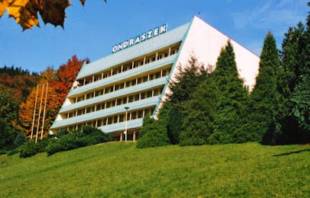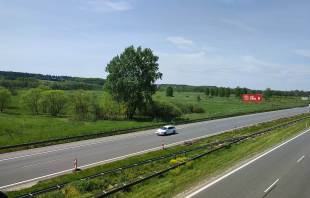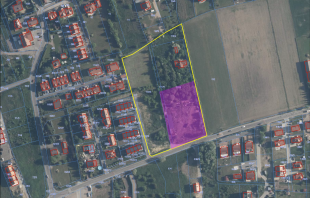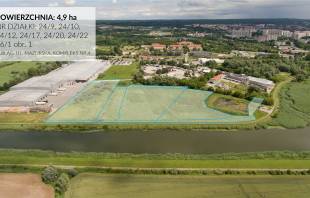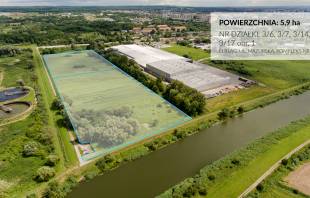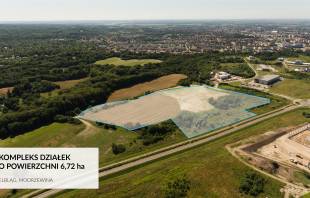The Polish shopping centre market is becoming increasingly saturated. According to data revealed by Cushman & Wakefield around 560,000 sq m of modern retail space came onto the market in 2015. Nearly 40% of that total was delivered in key agglomerations where there are already many shopping centres and competition between them is rising. Therefore, small towns deserve a special note.
In recent years developers looking for a niche on the shopping centre market have focused on cities with a population of less than 50,000, delivering shopping centres or smaller schemes such as retail parks or convenience centres. These included Galeria Neptun in Starogard Gdański, the Multishop retail park in Sochaczew, Dekada Brodnica, Stop.Shop.Żary, MYBOX Oława and Centrum Zakupów Czerwionka Leszczyny.
Retail development continues in small cities with retail parks Multishop in Jarocin and Cydr in Radzionków currently under construction. Developers delivering retail schemes in small cities include Immofinanz (Stop.Shop. retail parks), Eyemaxx Development (MyBox retail parks), Napollo (Centrum Zakupów), Retail Concept (Karuzela retail parks), Dekada Realty (Dekada centres). Local entrepreneurs who have an in-depth knowledge of their respective towns, the shopping potential and customer needs are also active market players. Working together with an advisory firm responsible for commercialization they can build a retail scheme meeting expectations of tenants and local communities.
Why invest in small towns?
What makes a retail project successful? What’s it like from the perspective of developers, tenants and customers? In order to answer these questions we will consider features of small retail parks that are being more and more often constructed in small Polish cities. According to Cushman & Wakefield’s data, in 2015 Poland had 50 retail parks totalling 950,000 sq m.
From the perspective of investors and developers location is the key factor making a developer project attractive. Location should be considered on a macro and micro scale. On the one hand, on a macro scale there is potential in small towns where there is no modern retail space, the purchasing power is high enough and unemployment levels do not deter potential investors. Both the town size and the catchment area of a retail scheme that can substantially affect the shopping potential of a location are important. In assessing the potential of small towns the current and planned supply of retail schemes should be considered. If a town already has a shopping centre, a thorough market research must be conducted before making a decision to build a retail park in it. A new retail park can either complement a shopping centre’s offer or constitute an alternative retail destination for residents of a large housing estate. Specialists of an advisory firm offering market analyses and commercialization experts can provide support in evaluating the feasibility of building a retail park.
On the other hand, on a micro scale a location is chosen on the basis of a number of factors such as presence of a strong food operator, good transport links, a large and convenient car park and proximity of housing developments. Kaufland, Lidl, Tesco and Biedronka are common food operators in small towns where retail schemes are constructed largely as convenience stores or retail parks offering 3,000-5,000 sq m of leasable space. Advantages of such retail schemes are lower construction costs and shorter delivery times than in the case of shopping centres.
Commercial success factors
From the customer’s viewpoint retail parks constructed in small towns should primarily satisfy basic shopping needs. In order to meet customer expectations and achieve a commercial success owners of such retail schemes rely on established brands. The typical tenant mix includes health and beauty stores (Rossmann, Hebe), pharmacies (Cosmedica, Arnika), footwear stores (CCC, Deichmann), stores with consumer electronics (RTV Euro AGD, Media Expert, Neonet), discount stores (Pepco, Takko, KiK), sports stores (Martes Sport), furniture and homeware stores (Abra, JYSK). Customers can therefore save a lot of time as they do not have to travel to larger cities in order to buy staple products. They can do quick shopping conveniently in a single location.
Tenants can also benefit from retail parks whose customers are less inclined to do impulse shopping in contrast to customers of shopping centres with dozens of stores. Customers come regularly to retail parks to do specific shopping quickly. The operating model of a small retail park with five to ten tenants makes this easy. Another advantage of retail parks for tenants is relatively low rents and common costs.
The potential of small towns is also appreciated by real estate funds which are more and more eager to invest in retail parks, convenience schemes and shopping centres. Investors know that following the retail space saturation on the markets of large cities retailers will also expand in smaller towns. The increased purchasing power in small towns and improving economic fundamentals will contribute to development of new retail schemes and an increase in their value. This will benefit developers, tenants and customers.
omasz Lipiński, Retail Department, Cushman & Wakefield




















